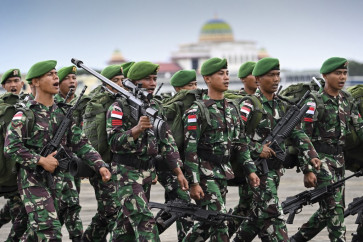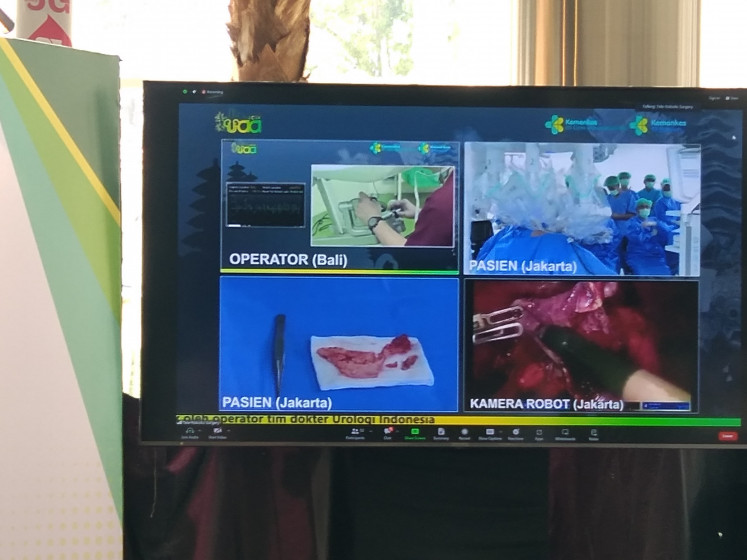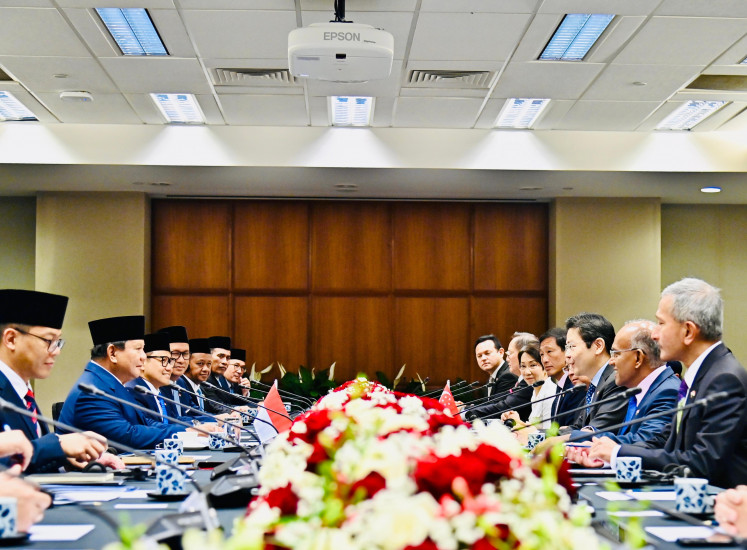Popular Reads
Top Results
Can't find what you're looking for?
View all search resultsPopular Reads
Top Results
Can't find what you're looking for?
View all search resultsMemories of ‘Petrus’ resurface after three decades
Sumardi, 44, a Karawang resident says the days when Karawang villagers repeatedly found bodies from the penembakan misterius (mysterious shootings), or Petrus, in the area of Citarum River, Karawang, West Java, remain fresh in his memory
Change text size
Gift Premium Articles
to Anyone

S
umardi, 44, a Karawang resident says the days when Karawang villagers repeatedly found bodies from the penembakan misterius (mysterious shootings), or Petrus, in the area of Citarum River, Karawang, West Java, remain fresh in his memory.
“I remember it was 1984, and I was 16. We found bodies floating in Citarum River maybe once every two days, some of them had tattoos, some had no tattoos at all,” he said.
“Some of the bodies got stuck at the edge of the river, while some were carried away by the current, but we just let them go, hoping the river would take them to the sea,” he added.
Sumardi said that the villagers simply didn’t want to get involved.
He said that it was a terrifying time, but he and his family didn’t feel threatened because they knew the killings only targeted specific people.
“We didn’t feel threatened because we knew they only went after people with tattoos and criminal records,” he told The Jakarta Post on Wednesday.
One of his neighbors was one of the operation’s targets, he said. The man, a much-feared gang member in the neighborhood, was abducted by a group of people who looked like military officers in 1984, Sumardi explained.
“This neighbor of mine was suddenly abducted from a wedding party by a number people who carried weapons. I saw them push him into a hardtop jeep. Witnesses said that later that night they saw him being dragged like an animal and tied up behind the jeep. Since then, we have never seen him again,” he said.
Sumardi is not the only one who still remembers the era of the Petrus killings as a frightening time.
Yosep Adi Prasetyo, the deputy chairman of the National Commission on Human Rights (Komnas HAM) remembered that time as a terrorizing period for his generation. “The Petrus killings have left behind a generation with scars from tattoo removal. It left a very big hole in our hearts,” Yosep said.
According to the result of a Komnas HAM investigation announced on Tuesday, as many as 2,000 bodies of Petrus victims were found in cities throughout Central and East Java, Bogor in West Java, Jakarta, Palembang in South Sumatra and Medan in North Sumatra.
Yosep said that according to the Komnas HAM investigation, some of the victims had been murdered in unusual ways.
“We interviewed doctors, forensics experts, and nurses who had contact with the victims’ bodies, and according to their information, some victims were killed with gold bullets,” Yosep said, in reference to the belief that people could use black magic to make themselves impervious to all but gold bullets.
“Some victims had their chests split open with axes when the perpetrators noticed they were still breathing after being shot,” he added.
Asvi Warman Adam, a historian at the Indonesian Institute of Sciences (LIPI) and a former member of
the 1965 purge investigation team, said that Komnas HAM had found indications of gross violations of human rights in the Petrus killings as early as 2003.
“Komnas HAM faced a lot of obstacles in completing this investigation, that’s why the progress was very slow and that is also why I’m not letting my hopes get too high that the Attorney General’s Office [AGO] will follow up on this case or even take it to the ad hoc human rights court,” he told the Post.
Asvi added that a major hindrance to further investigation by the AGO was a required recommendation to proceed from the House of Representatives.
“The further investigation is not only up to the AGO but also the House of Representatives, which makes it a lot harder to finish. As we know a Golkar politician recently rejected any further investigation of human-rights violations occurring before 1998. I don’t know whether the government will take serious action to close this case or not,” he said.
“I am happy enough knowing that the Komnas HAM finished their investigation and declared this case as a gross violation of human rights, because this means they have made it a matter of official record,” he added. (nad)









